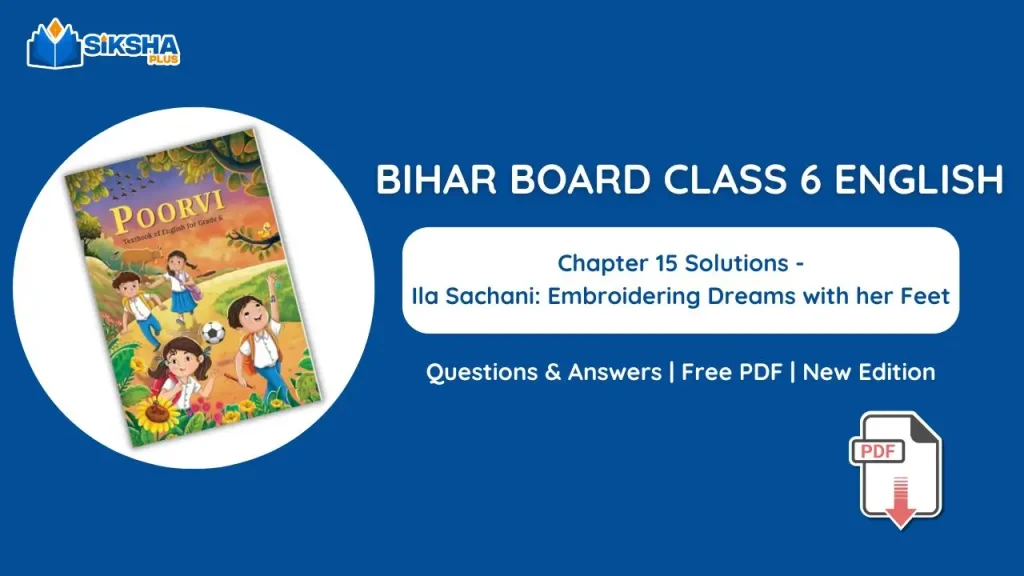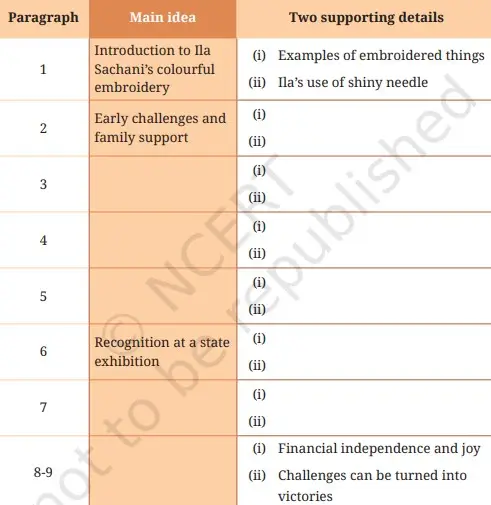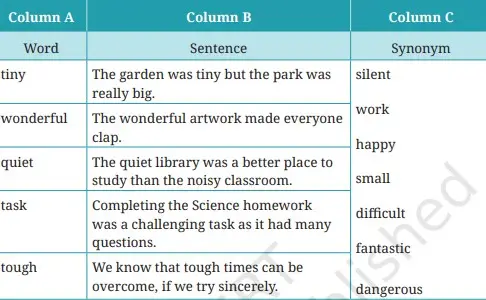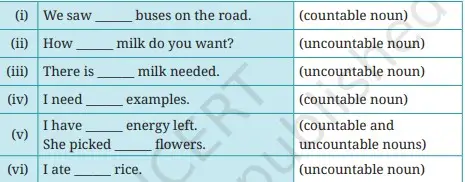New Book Bihar Board Class 6 English Chapter 15 Solutions are available here. This provides all questions and answers of chapter 15 – “Ila Sachani: Embroidering Dreams with her Feet” for free. It follows the new English Book of Bihar Board Class 6 – Poorvi.
Chapter 15 – Ila Sachani: Embroidering Dreams with her Feet tells the inspiring true story of a remarkable artist from Gujarat. Born without full use of her hands, Ila learned Kathiawar embroidery using only her feet! With her mother and grandmother’s guidance, she mastered not just Gujarati embroidery but styles from Kashmir to Lucknow. Ila’s journey shows how passion and hard work can turn challenges into extraordinary achievements. Below are the Bihar Board Class 6 English Chapter 15 – Ila Sachani Question Answers to help you understand this chapter better.

Bihar Board Class 6 English Chapter 15 Solutions
Contents
| Class | 6 |
| Subject | English (Poorvi) |
| Chapter | 15. Ila Sachani |
| Board | Bihar Board |
LET US DISCUSS
Read the paragraphs and write the main idea for each. Then, match the main idea with two supporting details.

Ans:
| Paragraph | Main idea | Two supporting details |
|---|---|---|
| 1 | Introduction to Ila Sachani’s colourful embroidery | (i) Examples of embroidered things like cushion covers and tablecloths (ii) Ila’s use of shiny needles and colorful threads |
| 2 | Early challenges and family support | (i) Ila was born with hands that couldn’t function normally (ii) Her family encouraged her to use her feet for embroidery |
| 3 | Developing embroidery skills | (i) She learned different stitches and patterns (ii) She created beautiful traditional designs |
| 4 | Beginning to sell her work | (i) People in her village started buying her embroidery (ii) Her popularity grew through word of mouth |
| 5 | Growing her business | (i) She started getting orders from nearby towns (ii) Friends helped her share photos of her work online |
| 6 | Recognition at a state exhibition | (i) Her work was displayed at an important state exhibition (ii) She won an award for her unique foot embroidery |
| 7 | Teaching other women | (i) She began teaching embroidery to women in her village (ii) These women also started earning money from their work |
| 8-9 | Achieving independence and confidence | (i) Embroidery brought her financial freedom and happiness (ii) Her story shows how challenges can be turned into success |
LET US THINK AND REFLECT
1. Read the following lines and answer the questions that follow.
Unlike other children, she could not use her hands in the usual way. While other small hands drew figures in the sand or plucked wild flowers, she wondered why she could not join them. She too wanted to hold a chalk in her hands and draw figures on a slate.
(a) Choose the correct option to fill in the blank.
‘Unlike other children’ means that Ila was _____. (unaware/different/simple)
Ans: Different.
(b) What could Ila have felt when she could not join others in things they did?
Ans: Ila probably felt sad and left out when she couldn’t join other children in their activities. She might have felt lonely watching them play and draw, wishing she could do the same things they could.
(c) Complete the following with a suitable reason.
Ila could not draw figures on the slate because _____.
Ans: Ila could not draw figures on the slate because she was born with her hands hanging loose by her sides and couldn’t use them like other children.
2. What creative ways did Ila and her family use to overcome the challenges she faced?
Ans: Ila and her family found a creative solution by teaching her to use her feet instead of her hands. They encouraged her to hold needles with her toes and create beautiful embroidery patterns. This clever approach helped her develop a special skill despite her physical challenges.
3. How did ‘new independence’ help Ila?
Ans: The “new independence” helped Ila by allowing her to earn her own money through embroidery. This made her feel proud, confident, and happy. She no longer had to depend completely on others and could make her own decisions, which gave her a sense of freedom.
4. Why was the first state exhibition an important event in Ila’s life?
Ans: The first state exhibition was very important for Ila because many people saw her beautiful work for the first time. She won an award that made her famous. After this, more people wanted to buy her embroidery, and she got more opportunities to sell her work and earn money.
5. What does the sentence, ‘art has the power to rise above physical boundaries and touch the soul’, tell us about the power of art?
Ans: This sentence tells us that art is special because it doesn’t matter if someone has physical difficulties. Through art, people can express their feelings and touch others’ hearts. In Ila’s case, even though she couldn’t use her hands, her foot embroidery was beautiful and moved people emotionally.
6. How can we be helpful and encouraging like Ila’s family and friends when someone faces challenges?
Ans: We can be helpful like Ila’s family by believing in people who face challenges. We can offer our support, be patient, and help them find new ways to do things. We should never make fun of their difficulties but instead praise their efforts and celebrate their small victories.
7. How can Ila’s story help others to overcome challenges in their lives?
Ans: Ila’s story can help others by showing that difficulties don’t have to stop us from achieving our dreams. She found a different way to do embroidery when she couldn’t use her hands. Her story teaches us to be creative in solving problems, to never give up, and to believe in ourselves even when things are hard.
LET US LEARN
1. Read the words from the text given in Column A. Then, try to understand what they mean by reading the sentences in Column B. Now, match the word to its correct synonym in Column C. There are two extra synonyms given. You may refer to the dictionary.

Ans:
| Word | Sentence | Synonym |
|---|---|---|
| tiny | The garden was tiny but the park was really big. | Small |
| wonderful | The wonderful artwork made everyone clap. | Fantastic |
| quiet | The quiet library was a better place to study than the noisy classroom. | Silent |
| task | Completing the Science homework was a challenging task as it had many questions. | Work |
| tough | We know that tough times can be overcome, if we try sincerely. | Difficult |
2. Unscramble the antonyms of the words in Column A. An example has been given for you.
Ans:
(a) Tiny – E G H U (HUGE)
(b) Wonderful – R E E B L I T R (TERRIBLE)
(c) Quiet – I Y N S O (NOISY)
(d) Task – S I A E M T P (PASTIME)
(e) Tough – SEYA (EASY)
Use these antonyms in sentences of your own
Ans:
- HUGE: The elephant at the zoo was huge compared to the tiny ant on the ground.
- TERRIBLE: The weather today is terrible, but yesterday it was wonderful and sunny.
- NOISY: The classroom became noisy when the teacher left, unlike the quiet library.
- PASTIME: Playing cricket is my favorite pastime, but finishing my homework is an important task.
- EASY: The math test was easy for me, but many students found it tough.
3. Read the sentences from the text and focus on the highlighted words.
- You will see lots of bright colours.
- There are many lovely things like cushions and bedcovers.
- They taught her to create many beautiful patterns using her feet!
- She learned many styles.
- She received many awards.
(a) The highlighted words tell us about the quantity. Choose what the words show.
(i) Unmentioned quantity.
(ii) Large quantity.
Ans: Large quantity
(b) Let us now understand what words of quantity tell us.
Fill in the blanks to complete an example for each word of quantity. Hints are given in the brackets.

Ans:
(i) We saw many buses on the road.
(ii) How much milk do you want?
(iii) There is some milk needed.
(iv) I need a few examples.
(v) I have little energy left. She picked some flowers
(vii) I ate some rice.
LET US LISTEN
You will listen to a talk about Kathiawar embroidery. As you listen, circle the correct option. (refer to page 164 for transcript)
(a) Form
(i) Old.
(ii) New.
Ans: (i) Old.
(b) Colours
(i) Soft
(ii) Bright
Ans: (ii) Bright
(c) Stitches
(i) Running stitch
(ii) Chain stitch
Ans: (ii) Chain stitch
(d) Seen on
(i) Children’s caps
(ii) Pants
Ans: (i) Children’s caps
(e) Things used
(i) Small mirrors
(ii) Shapes of buttons
Ans: (i) Small mirrors
(f) Designs
(i) Elephants and horses
(ii) Squares and triangles
Ans: (i) Elephants and horses
| Other Chapters |
|---|
| 1. A Bottle of Dew (New Book) |
| 2. The Raven and the Fox (New Book) |
| 3. Rama to the Rescue (New Book) |
| 4. The Unlikely Best Friends (New Book) |
| 5. A Friend’s Prayer (New Book) |
| 6. The Chair (New Book) |
| 7. Neem Baba (New Book) |
| 8. What a Bird Thought (New Book) |
| 9. Spices that Heal Us (New Book) |
| 10. Change of Heart (New Book) |
| 11. The Winner (New Book) |
| 12. Yoga – A Way of Life (New Book) |
| 13. Hamara Bharat – Incredible India! (New Book) |
| 14. The Kites (New Book) |
| 15. Ila Sachani: Embroidering Dreams with her Feet (New Book) |
| 16. National War Memorial (New Book) – To read only |
